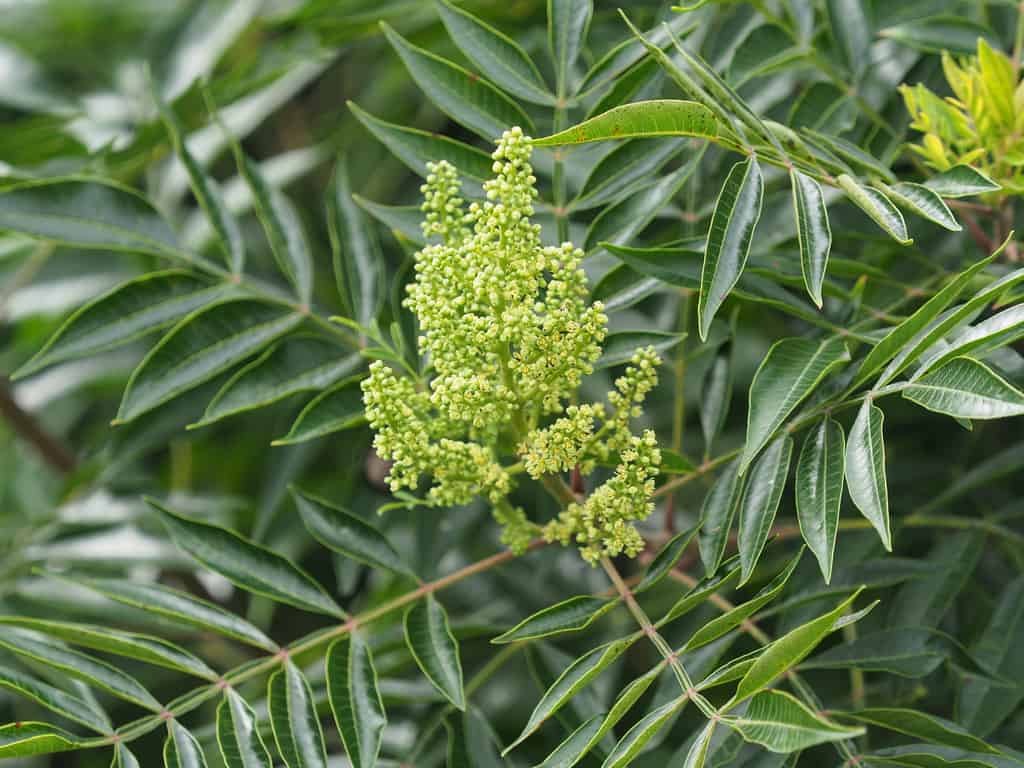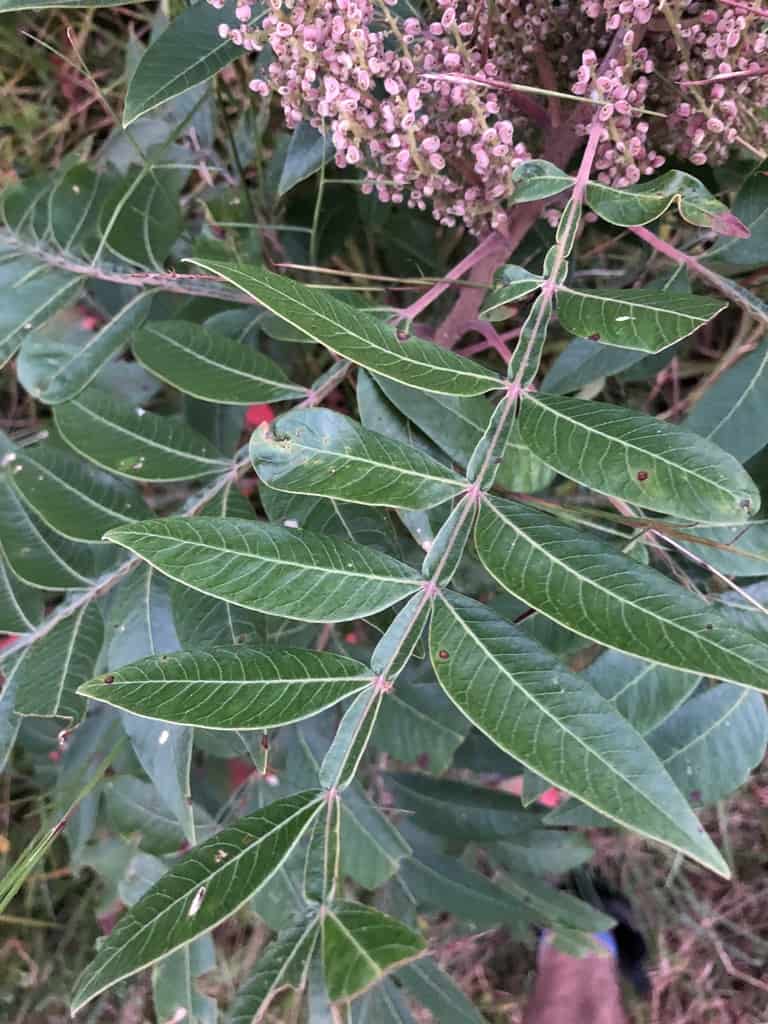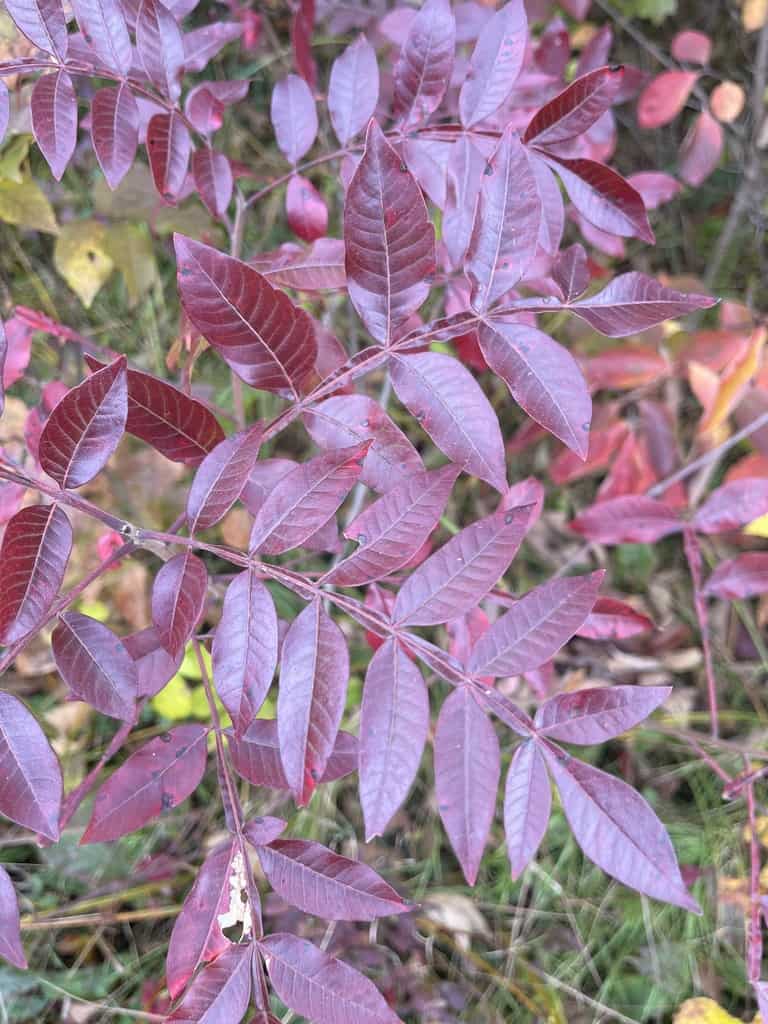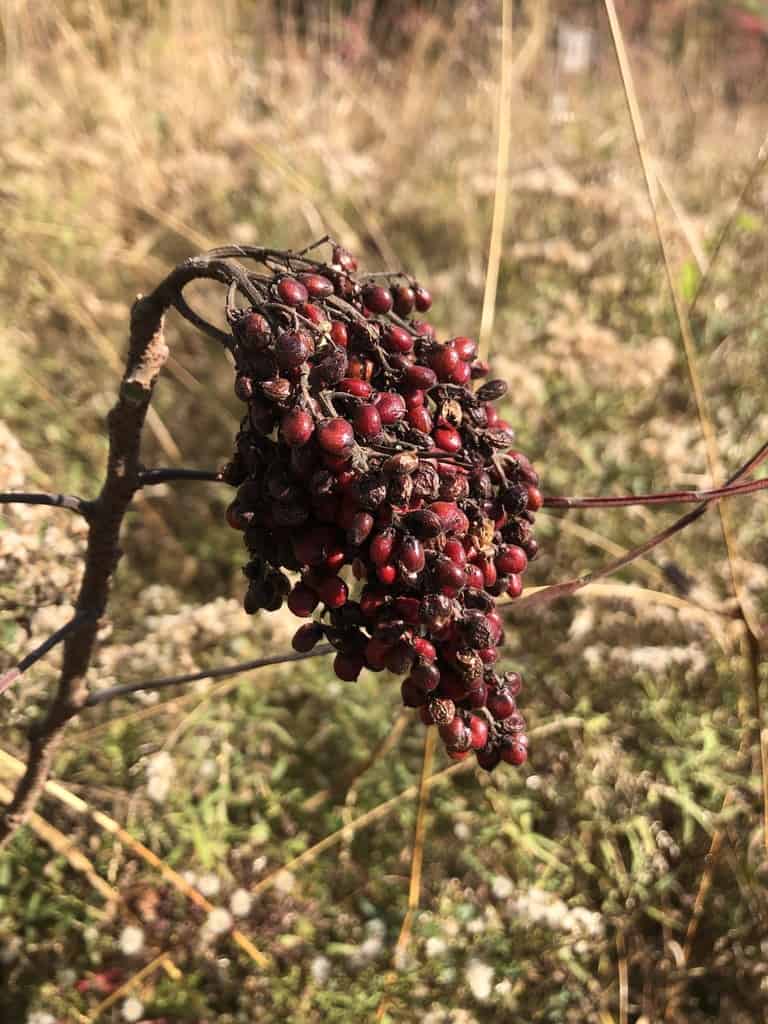
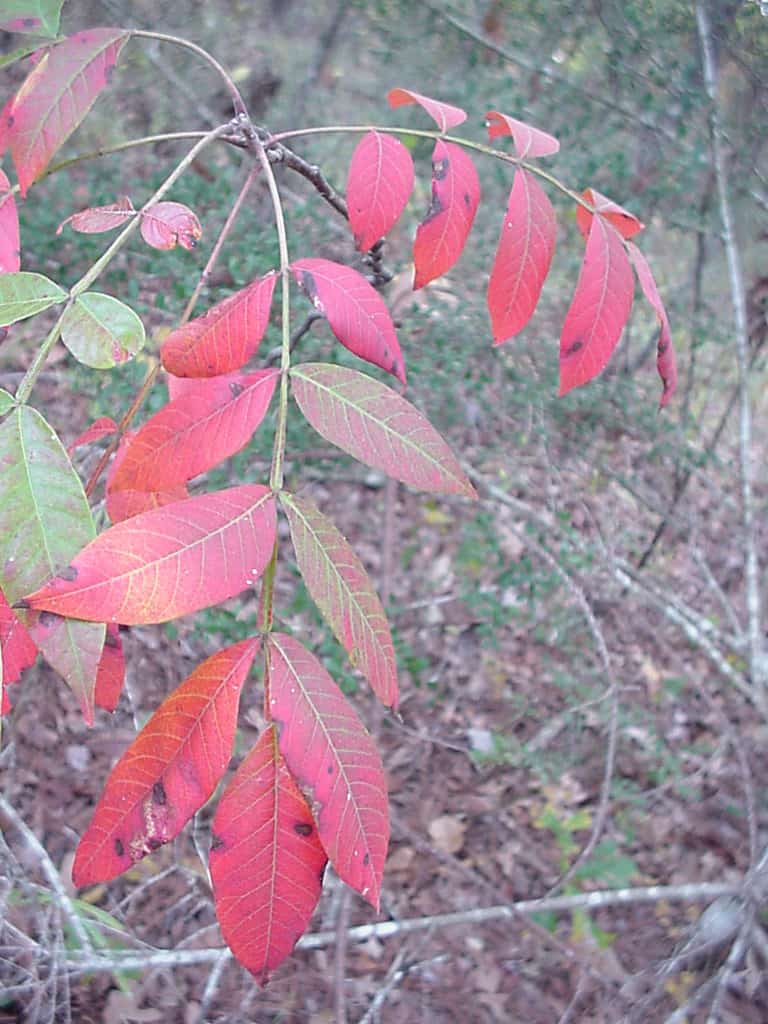

Winged Sumac Rhus copallinum is a large deciduous, perennial shrub or small (20’ – 35’ X 10’) tree that grows in generally acidic soils, rocky open wooded hillsides, thickets, prairies, abandoned fields, roadsides, and bottomlands, of the northern, western and Florida parishes of Louisiana. Its leaves are pinnately compound and have a winged leaf axis and watery sap; leaves turn reddish-purple in fall. Yellowish-green flowers appear in summer and become persistent, dull red fruit clusters in winter.
Winged Sumac spreads aggressively by rhizomes to form thickets and can invade prairies in the absence of fire. Bobwhite Quail, other birds, and small mammals eat the fruits; Whitetail Deer may browse the twigs in Winter. Plants provide nesting materials and structure for native bees.

